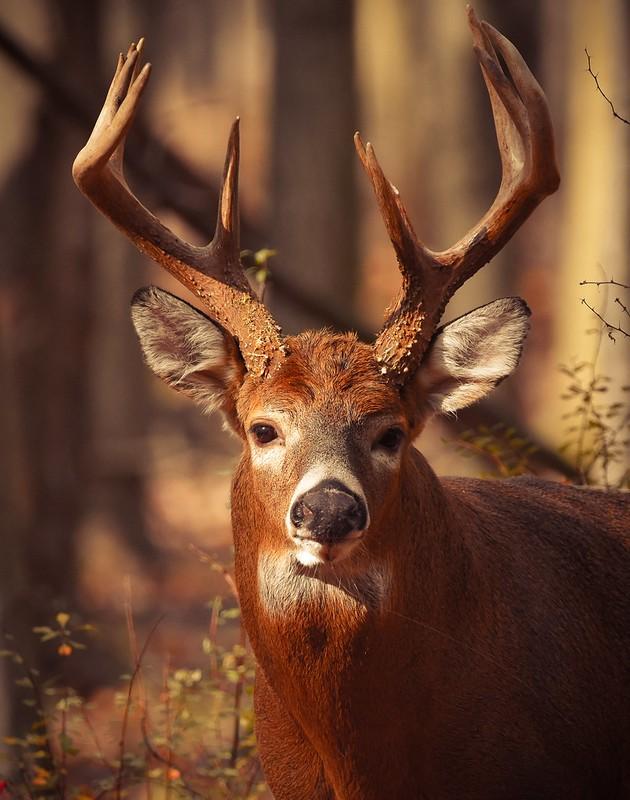A group of researchers at the Ohio State University who first reported detection of SARS-CoV-2 in white-tailed deer (WTD) in December 2021 published a study today based on ongoing surveillance that shows more than 30 human-to-animal spillover events and fast virus evolution in a relatively small sample size of deer in northeastern Ohio.
Though the number of spillover events are striking, both the Centers for Disease Control and Prevention and the US Department of Agriculture Animal and Plant Health Inspection Service (APHIS) note that SARS-CoV-2 detections in WTD are actually down.
The findings, published in Nature Communications, raise questions for scientists who are trying to see how and if SARS-CoV-2 will become established in animal reservoirs. And, when established, how the virus in animals might ricochet back to reinfect humans.
"From our standpoint, we were astounded in a short sampling period that there was that number of spillover events," senior author Andrew Bowman, DVM, PhD, said in an interview. "We have no idea where the interface is happening, but it's not just hunters."
We were astounded in a short sampling period that there was that number of spillover events.
Bowman explained that 1,522 nasal swabs were collected from free-ranging deer in 83 of Ohio's 88 counties from November 2021 to March 2022, encompassing both urban and rural communities. Of those samples, roughly 10% were positive for the SARS-CoV-2 virus.
Rapid virus evolution
Subsequent blood sampling and testing showed an estimated 23.5% of deer in Ohio had been infected at one time or another.
Bowman's group then conducted whole-genome sequencing on 80 samples from deer, and 88.8% (71/80) belonged to the Delta variant (B.1.617.2 and AY PANGO) lineages, matching the dominant variant circulating in people at the time of sampling.
"The timing of the delta wave in humans coincided with the timing of the late autumn WTD hunting season in Ohio (our most intense sampling period), and we detected frequent introductions of delta variant viruses from humans to WTD," the authors wrote.
The genomic sequencing also allowed the researchers to estimate the rate of SARS-CoV-2 evolution (substitutions per site per year) in deer, which was approximately 3 times higher compared to humans for the Alpha variant and 2.7 times higher for the Delta variant.
Feds note detections down in deer
Though the number of spillover events are striking, both the Centers for Disease Control and Prevention and the US Department of Agriculture Animal and Plant Health Inspection Service (APHIS) note that SARS-CoV-2 detections in WTD are actually down.
"APHIS is seeing an overall decreasing trend of SARS-CoV-2 detections in white-tailed deer when compared to our first year of surveillance in white-tailed deer," said Jonathon Heale, a staff wildlife biologist at APHIS.
As noted in a recent One Health webinar from the CDC, prevalence in WTD dropped from 12.3% in 2021 to 1.6% in 2022.
APHIS is seeing an overall decreasing trend of SARS-CoV-2 detections in white-tailed deer.
Heale said WTD may be an anomaly. "While we have expanded the scope of our SARS-CoV-2 surveillance to include several more species, APHIS is not currently seeing an increase in detections in wildlife. Other than white-tailed deer, spillover from humans to wildlife is exceedingly rare," he told CIDRAP News.
Bowman said the drop in prevalence may have to do with variants. "We've seen some early experimental work that deer seem to be less susceptible to Omicron lineages, and the virus doesn't replicate as well as older lineages," he said.
A reservoir of divergent strains
But instead of being encouraging, that raises a new threat Bowman is concerned about: Almost 10% of the deer samples in today's study showed Alpha variant 8 to 12 months after that variant dominated in humans.
"We have Alpha lineage persisting in deer for over a year," he explained. "That's potentially creating a reservoir of divergent strains that could come back into the human population. That is the thing we need to keep an eye on.
We have Alpha lineage persisting in deer for over a year. That's potentially creating a reservoir of divergent strains.
"It's narrow-sighted to think deer will maintain SARS-CoV-2 in the same way the virus was introduced into the population," Bowman said.
Heale said APHIS is working to understand how SARS-CoV-2 spillover events could be contributing to the rapid variant changes in the virus.
"When the virus jumps from one species to another, it is exposed to a new set of selective pressures. These pressures can favor the emergence of new variants that are better adapted to the new host," he said.
"More research is needed to understand the full extent of the role that spillover events play in the evolution of SARS-CoV-2."
These pressures can favor the emergence of new variants that are better adapted to the new host.





















